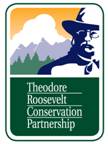‘Backcountry Borderlands’ Focus of New TRCP Report
OutdoorHub 10.05.11
Washington, D.C. – The need for coordinated management of America’s national forest roadless areas underlies “Backcountry Borderlands,” a new report released today by the Theodore Roosevelt Conservation Partnership that illustrates the value of roadless lands to fish, wildlife and sportsmen by profiling backcountry areas that straddle state lines.
– The need for coordinated management of America’s national forest roadless areas underlies “Backcountry Borderlands,” a new report released today by the Theodore Roosevelt Conservation Partnership that illustrates the value of roadless lands to fish, wildlife and sportsmen by profiling backcountry areas that straddle state lines.
Elk herds on the Colorado-Wyoming border, public-lands fisheries on the Oregon-Washington line, and mule deer and elk in the mountains bridging Arizona and New Mexico are among the report’s case studies. The profiled areas, which would be subject to cross-jurisdictional development pressures without a national Roadless Area Conservation Rule, show how prime fish and wildlife habitat – and backcountry hunting and angling – can be sustained through adherence to this clear national standard for administration of the nation’s 58.5 million acres of inventoried roadless areas.
“Sportsmen know that national forest roadless areas provide some the best fish and wildlife habitat and hunting and fishing available on public lands,” said Joel Webster, director of the TRCP Center for Western Lands. “Thousands of us enjoy the benefits provided by backcountry areas that border state boundaries. With the 2011 big-game season under way across much of the West, we’re depending on responsible roadless area management for high-quality outdoor experiences.”
While the 2001 Roadless Area Conservation Rule and Idaho roadless rule currently provide consistent management of roadless areas – across state boundaries – proposed federal legislation called the Wilderness and Roadless Area Release Act (H.R. 1581/S. 1087) would subject some 56 million acres of public lands to development. It would overturn the national roadless rule, Idaho roadless rule, proposed Colorado roadless rule and any other state or national rule that attempts system-wide conservation of roadless areas, resulting in a patchwork of permissive development projects that could harm the fish and game populations on which hunting and angling rely.
“I’ve fished nearly every major river in Idaho and know first-hand the importance of backcountry headwater streams for downstream angling,” said Nathan Cuvala, a member of the Idaho chapter of Backcountry Hunters & Anglers. “If the so-called Wilderness and Roadless Area Release Act were to pass it would eliminate both the Idaho and the national roadless rules. The loss of the Idaho roadless rule would undermine years of collaborative stakeholder involvement that went into crafting the rule and would be a huge step backwards for Gem State sportsmen, while the loss of the national roadless rule would negatively impact backcountry borderlands and hunters and anglers across America.”
Likewise, development allowances in the draft Colorado roadless rule, a state-based management plan, could jeopardize backcountry borderland fish and wildlife habitat in Wyoming, Utah and New Mexico.
“The most recent draft Colorado rule is improved from previous versions, and sportsmen remain optimistic that the rule will be fixed,” said TRCP Colorado Field Representative Nick Payne. “This rule-making process, however, illustrates the challenge of developing state-based roadless regulations that adequately safeguard valuable habitat and recreation opportunities.”
The consistent management of roadless areas is also important to outfitters who depend on these lands economically. Hunting and angling annually contribute more than $190 billion to the U.S. economy.
“I’ve been guiding mule deer and elk hunts on the Medicine Bow for years,” said Ron Platt of Platt’s Guides and Outfitting in Encampment, Wyo. “We see a lot of animals get pushed north into lower elevations in Wyoming during hunting season. Without proper management of national forest lands in both Colorado and Wyoming, our clients’ success rates could drop dramatically.”
Read what other sportsmen are saying about backcountry borderlands:
“The Bruneau River is an outstanding public lands resource that benefits anglers in both Nevada and Idaho,” said William Molini, former director of Nevada Department of Wildlife. “Conservation-minded backcountry management in the headwaters combined with restoration efforts downstream resulted in this success story for fish, wildlife and the public.”
“I apply for Oregon’s big-game Unit 55 every year with the hope of drawing the most coveted archery bull elk tag in the state,” said Mike Roth, a sportsman from Silverton, Ore. “The fisheries in the Walla Walla Roadless Area aren’t the only beneficiary of sound management practices – the elk hunting is unparalleled. Conservation of these lands supports fish and wildlife populations, as well as sportsmen like me.”
“These roadless areas are of paramount importance where they exist,” said Dennis Slade, from Chandler, Ariz., who hunts the Blue Range, “as they provide a certain measure of sanctuary for the big-game animals residing there where they can live unmolested for much of the year, only bothered by foot traffic and mostly during the hunting season.”
“Sportsmen in both Washington and Oregon enjoy fishing the Walla Walla River Watershed,” said Joe La Tourrette of Olympia, Wash. “In order to sustain this important salmon and steelhead fishery, we have got to do more than simply restore the waters downstream in Washington. We also must maintain strong national roadless regulations that conserve the river’s headwaters on national forest lands in Oregon.”
“Sportsmen and other backcountry recreationists understand that wildlife needs areas of safety and solitude for their continued survival,” said Jim Bates, from Las Cruces, N.M., who hunts wild turkey and big game in the Blue Range. “Roadless areas provide them.”

